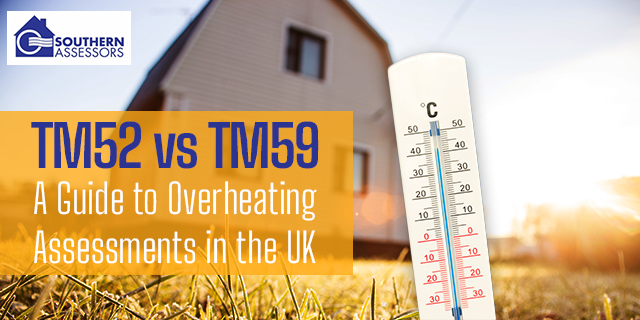Overheating in buildings has become a growing concern in the UK, and this is a result of climate change, increasing urban density and the need for energy efficiency. Indoor comfort is important, especially in homes and workplaces where people spend most of their time.
To assess overheating risks, the Chartered Institution of Building Services Engineers (CIBSE) has developed two key methodologies: TM52, which applies to commercial buildings and TM59, which focuses on residential properties.
Understanding the differences and applications is important for any designer, architect or developer. This article discusses everything you need to know about TM52 and TM59 overheating.
Understanding The Fundamentals of TM52
TM52 was introduced to assess overheating in naturally ventilated non-domestic buildings. It is based on the principle of adaptive thermal comfort and acknowledges that people adjust their expectations of comfort based on their surroundings and experiences.
TM52 emphasises flexibility because it considers that occupant comfort can vary depending on the activity, clothing and personal preference. It uses a three-criteria system to assess overheating:
- The building should not exceed a certain threshold of temperature for a specified duration.
- The building’s internal temperature should not rise above a certain limit.
- Overheating events should not exceed a particular limit.
These criteria ensure that naturally ventilated buildings can still be accessed accurately, considering factors like outdoor temperature and the building’s ability to adjust to the weather.
Understanding The Fundamentals of TM59
it focuses on residential buildings and acknowledges that the needs and behaviours of residents differ from those in commercial spaces. It is still not to evaluate how homes can cope with overheating both during the day and at night.
Unlike TM52, TM59 takes it a step further by considering nighttime comfort. It ensures that the homes provide adequate cooling for residents to sleep comfortably. It recognises that people in homes might open windows, close curtains, or use fans, and that would influence the indoor temperature.
A key criterion to access overheating calculations in building modelling includes maintaining a comfortable temperature during the day and ensuring that any excess heat is manageable during the evening hours.
Choosing the Right Approach
When you have to decide between TM52 and TM59, it all depends on the type of building you are assessing and the goal of the project. Here are some things you can consider:
- Building type: Is the building commercial or residential? If you are working with a school or office building, TM52 is a better approach. If it’s a home apartment or mixed-use building, TM59 should be your go-to.
- Occupant needs: Are the building occupants largely sedentary, like in the office, or are they active like in the home environment?
- Compliance regulations: They both comply with UK building regulations, but each method has its intricacies, so choosing the one that aligns with your project-specific requirements is important.
Conclusion
Overheating assessments play an essential role in the desired accessibility of modern buildings. CIBSE TM52 & TM59 assessment in the UK offers complementary approaches each tailored to different types of buildings. Understanding the differences between the two would help designers, builders, or homeowners make informed decisions to create comfortable spaces.
Whether you’re designing an office, a school, or a home, choosing the right overheating assessments will maximise thermal comfort. Connect with Southern Assessors today for appropriate guidance.


